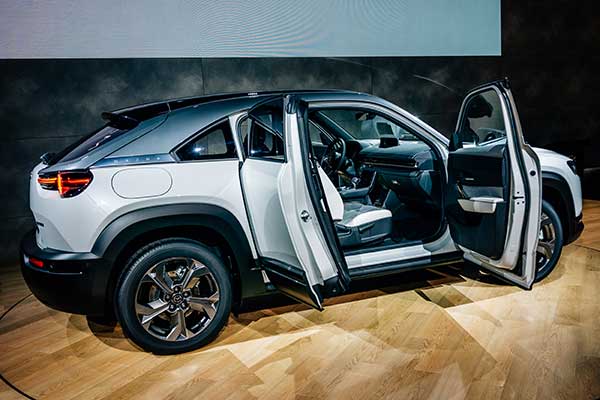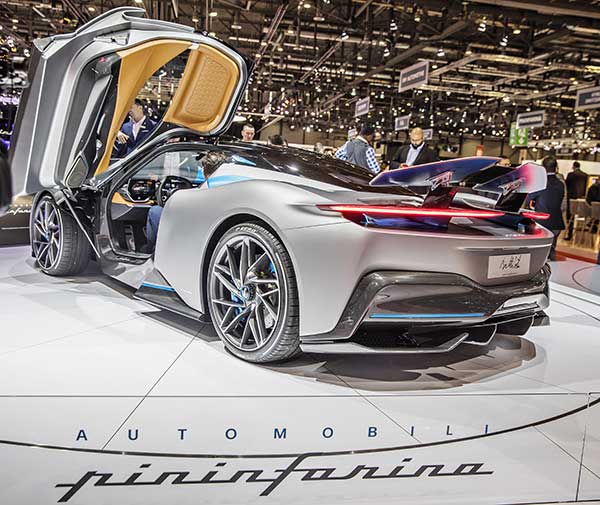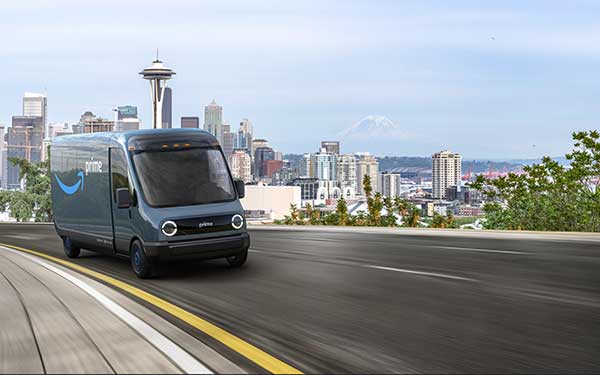
The past quarter saw new developments related to the rollout of charging infrastructure in Europe, fresh partnerships across the industry and yet more product launches.
Battery electric vehicles are powered by lithium-ion batteries, as are laptops, mobile phones and many other appliances. Small surprise, then, that the Nobel Prize in Chemistry 2019 was awarded to the team responsible for the development of the lithium-ion battery in October.
The accolade will be shared by Stanley Whittingham, John Goodenough and Akira Yoshino. The latter created the first-such battery in 1985, working with Goodenough’s cathode, while Whittingham kick-started the research into the technology in the 1970s.
Battery production in the present day is very much an Asian forte, with the major cell manufactures hailing from either China, Japan and South Korea, which aims to accelerate the move toward electric driving, President Moon Jae-in said in October.
The country aims to invest some U.S. $50 billion in the automotive sector, with $1.7 billion earmarked for research and development, as well as infrastructure. By 2030, one in every three cars sold in South Korea is expected to be zero emissions.
Asian prowess in cell manufacturing was once again brought the fore when Daimler in September said its electric trucks would be fitted with batteries produced by China’s Contemporary Amperex Technology Company from 2021 onward. Both the Mercedes-Benz and Freightliner brands will use CATL’s batteries.
Audi is reportedly in talks with Chinese manufacturer BYD for batteries in an ongoing effort to diversity supplies, people familiar with the negotiations said in August. BYD, backed by Warren Buffet, has thus far concentrated its efforts on manufacturing battery packs for its own vehicles. It also works with Mercedes’ parent company Daimler on building Denza-badged cars. Audi’s BEV offering for the Chinese market, the Q2L e-tron, is fitted with batteries manufactured by CATL.
Europe, therefore, is playing catch-up in terms of battery manufacturing. Volkswagen aims to change this, and in September inaugurated a pilot production line for batteries in Salzgitter, Germany. A separate line for the recycling of batteries will become operational next year. Salzgitter is to be the site for a new Volkswagen gigafactory for batteries under a joint venture with Swedish battery producer Northvolt.
Fiat Chrysler Automobiles made a similar move in October with the announcement of a new battery assembly facility to be added to its Turin-based Mirafiori factory. FCA has earmarked $56 million for initial investments.
In related news, automotive parts supplier Bosch has developed a safety feature that is designed to cut off the battery pack from the rest of the vehicle in case of an accident. Using tiny controlled explosive, the battery’s wiring would be destroyed, thus preventing the vehicle from remaining energized, which would pose a risk to the lives of both the occupants and rescuers.
While many of the world’s major automakers by now have one or more BEVs in their line-up, many Japanese manufacturers, with the noticeable exception of Nissan, until recently did not. In October, Mazda at long last unveiled its first BEV.

A standalone model, the new MX-30 crossover, will compete with the likes of the Nissan Leaf and Toyota CH-R EV, which was launched in April. While similarly priced, the recently unveiled all-electric Honda e operates in a different segment of the market. Japanese automakers such as Daihatsu, Mitsubishi, Subaru and Suzuki have yet to launch a full electric vehicle.
|
“We could do all sorts of different things, but we’re going to play to what we’re good at: commercial vehicles, vans, pickups, performance vehicles and SUVs. We have loyal customers, we know our base and the margins are better. It’s just the right business.”
— Ted Cannis, Ford Motor Co.
|
Ford Motor Co. is also somewhat behind the curve, although its global director of electrification begs to differ. “We’re coming in at the right time,” Ted Cannis said in an interview with Auto News. “We could do all sorts of different things, but we’re going to play to what we’re good at: commercial vehicles, vans, pickups, performance vehicles and SUVs. We have loyal customers, we know our base and the margins are better. It’s just the right business.”
Ford launched an electric version of its F-150 pickup truck and a Mustang-inspired crossover on Nov. 17.
In October, Volkswagen CEO Herbert Diess also touched upon the topic of profit margins, saying they will not be impacted by the company’s switch to BEVs.
“Our advantage is that all our brands have the same platform for electric products and the same batteries that we buy in China,” he added.
The European Automobile Manufacturers’ Association published its first annual report on the transition to emission-free mobility. The report cites insufficient progress and a lack of government coordination on the charging infrastructure front. A twentyfold increase in the number of charging points is necessary if the goal of a 40% reduction in CO2 emissions by 2030 is to be met. At the end of last year, ACEA counted close to 145,000 charging points, while some 2.8 million are needed.
A move in the right direction happened in September with Hyundai Motor Group joining the Ionity JV as strategic partner and shareholder. The move means Hyundai and Kia will team up with BMW, Mercedes-Benz, Ford and the Volkswagen Group in rolling out Europe’s high-power charging network. Ionity charging points can charge up to 350 kilowatts.
Nissan, meanwhile, teamed up with French utility company EDF Group for the development of smart charging technology, with a special emphasis on vehicle-to-grid systems. This would enable Nissan owners to sell energy stored in their vehicle back to the supplier, which would make for cheaper electricity bills.
Registrations of electrically chargeable vehicles in the European Union were up 35.6% year-on-year in the second quarter, reaching 9,553 units, according to ACEA. While registrations of BEVs all but doubled by 97.7%, plug-in hybrid sales came out lower at 13.6% down. European demand for full hybrids continued to be strong in 2019, with sales up 38.2% to 210,348 units in April, May and June. The share of hybrid EVs in EU car sales was 5.1% in the second quarter, with electrically chargeable vehicles at 2.4%.

Italian design and engineering firm Pininfarina teamed up with Bosch and German holding company Benteler to develop a new platform for high-performance EVs, including the Pininfarina Battista sportscar, which is currently under development.
Porsche raised its stake in Croatian company Rimac Automobili, known for its high-performance all-electric supercars. Porsche acquired an additional 5.5%, putting its stake at 15.5%. “The fact that Porsche is now increasing its stake is the best form of confirmation for our collaboration and represents the foundation for an even closer relationship,” founder Mate Rimac said.
ExxonMobil will be Porsche’s electric powertrain fluids provider for the upcoming Formula E season, which kicked off in Saudi Arabia in November. The move expands a partnership of more than 20 years into racing with EVs, and the Mobil-branded fluids were developed specifically for the racing series.
Amazon will order 100,000 commercial EVs from Rivian. The manufacturer, which has yet to produce its first vehicle, is bankrolled by Amazon and Ford. The first vans are due to enter service in 2021. The entire fleet, to be built exclusively for Amazon, will be on the road by 2024.

Chinese automaker Chery plans to set up a JV with StreetScooter, a subsidiary of Deutsche Post. The Chinese-German tie-up aims to produce 100,000 light commercial vehicles per year by 2021.
Toyota will team up with Chinese manufacturers Guangzhou Automobile Group and FAW to make hydrogen fuel cell vehicles in a bid to bolster its presence on the Chinese market. It already supplies fuel-cell vehicle parts to Beiqi Foton Motor and Beijin SinoHytec, both commercial vehicle manufacturers. Toyota also intends to launch regular BEVs with GAC and FAW.
Audi is considering making its PPE platform for BEVs, developed in partnership with Porsche, available to other manufacturers. Parent company Volkswagen earlier in the year announced a similar move by declaring its intention to start sharing its Modular Tool Kit (MEB) EV platform. Ford will be the first to make use of the MEB platform. lrich Widmann, head of development at Audi, said there was interest in the market for the PPE platform at an October press gathering. “We’re having conversations. Sharing technology to generate scale effects is the only way to achieve the turnaround in electric cars, both economically and ecologically.”
Peugeot reported stronger-than-expected demand for its new e-208 in October. Whereas the French manufacturer had expected to fit some 10% of the new 208 units with a battery pack, the figure based on pre-orders is in the range of 25%. “We can take the e-208 up to 20% of the new 208’s production of about 300,000 units a year,” Peugeot CEO Jean-Philippe Imparato told Automotive News Europe, meaning demand is likely to outstrip supply, especially when taking expressions of interest into consideration. “Of the 40,000 qualified leads we received, half were for the e-208. A quarter of the pre-orders we got are for the e-208,” he added.
Auto Express broke the news that BMW might be planning an all-electric version of the new 1 Series. “Even in the front-drive architecture, you will see fully electrified cars,” BMW’s i-Division head Robert Irlinger told the publication. “Whatever they demand, they can get – a plug-in hybrid X3, a fully-electric 4 Series, too. That’s a big step and a big change in our strategy.” BMW has opted for flexible vehicle architectures, enabling it to fit its models with a variety of drivetrains, including fully electric.
Parts and technology supplier Magna International in October brought its new Chinese production facility online in Shanghai. The plant, owned by the Magna-Huayu Automotive Systems JV, will produce gears, inverters and electric motors, among other parts, for Volkswagen’s MEB-based BEVs.
Land Rover aims to launch its first BEV at the end of 2021, U.K. publication Autocar reported in October. The model is described as a medium SUV, implying it will slot in between the Evoque and the Velar. The new BEV was reportedly developed in parallel to the new all-electric Jaguar XJ.
Plans by FCA and PSA to join forces to spread EV manufacturing costs are on target despite a surprise lawsuit filed by GM in late November. GM’s lawsuit accuses FSA of corrupt union bargaining practices designed to cost GM billions after it rebuffed a similar merger with the French group in 2015. The deal will make it the new partnership the world’s fourth-biggest automaker.

Sorry, a technical error occurred and we were unable to log you into your account. We have emailed the problem to our team, and they are looking into the matter. You can reach us at cs@lubesngreases.com.
Click here link to homepage